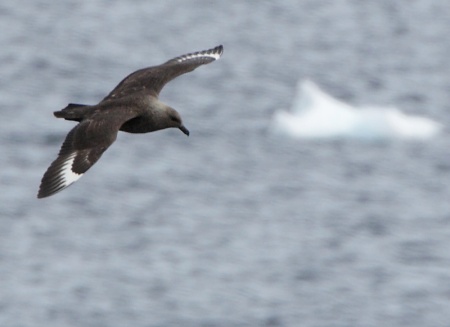m (→Behaviour) |
|||
| Line 14: | Line 14: | ||
==Habitat== | ==Habitat== | ||
Open ocean near coastlines. | Open ocean near coastlines. | ||
| − | Quite common on the Shetland Islands,living on moorland,and hill tops.There are 400 breeding pairs on the Island of Noss,and this is one of the biggest populations in the world today. | + | Quite common on the Shetland Islands, living on moorland,and hill tops. There are 400 breeding pairs on the Island of Noss, and this is one of the biggest populations in the world today. |
==Behaviour== | ==Behaviour== | ||
Revision as of 08:04, 17 November 2009
- Stercorarius skua
Identification
Length 57-59cm. Overall dark brown with distinct white bases of primaries (visible only in flight). Throat lighter brown. Tail slightly wedge-shaped. Black bill and legs.
Distribution
Chile, S. Argentina, Antarctic Penisula, Falkland Islands, and other S. Atlantic islands.
Quite common on the Shetland Islands.
Taxonomy
Monotypic. Has been placed in the genus Catharacta with the other large skuas (Sibley & Monroe, 1993; Clements, 2000).
Habitat
Open ocean near coastlines. Quite common on the Shetland Islands, living on moorland,and hill tops. There are 400 breeding pairs on the Island of Noss, and this is one of the biggest populations in the world today.
Behaviour
A scavenger who is not above stealing food from other seabirds. They are very protective of their nests and young, and they will attack at any opportunity, but, they will push rather than attack with their sharp claws or very sharp beaks. They nest in what is known as 'Scrapes' in the ground, obviously to give protection to their young.





